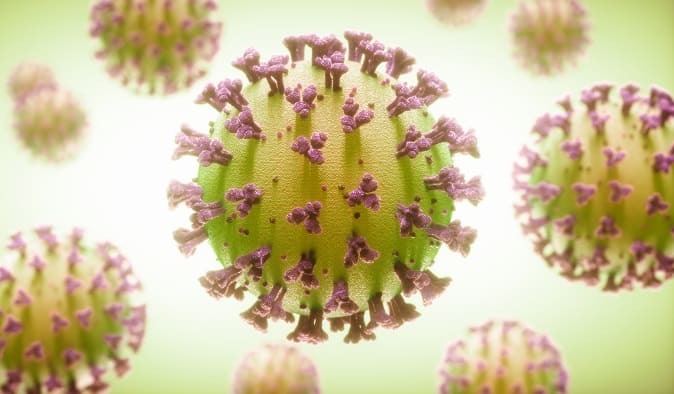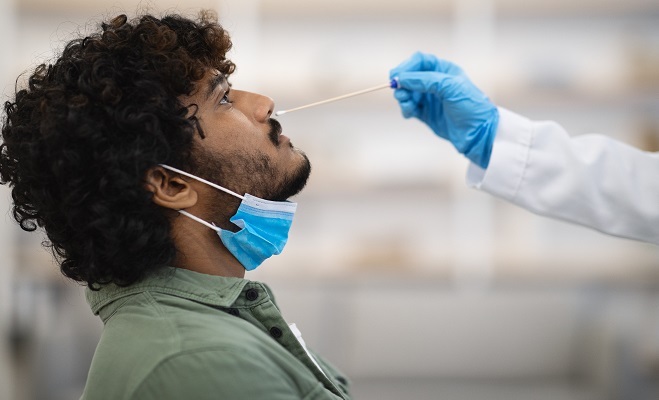
 Data Structure
Data Structure Networking
Networking RDBMS
RDBMS Operating System
Operating System Java
Java MS Excel
MS Excel iOS
iOS HTML
HTML CSS
CSS Android
Android Python
Python C Programming
C Programming C++
C++ C#
C# MongoDB
MongoDB MySQL
MySQL Javascript
Javascript PHP
PHP
- Selected Reading
- UPSC IAS Exams Notes
- Developer's Best Practices
- Questions and Answers
- Effective Resume Writing
- HR Interview Questions
- Computer Glossary
- Who is Who
What is the full form of COVID-19?
Introduction
COVID-19 or Coronavirus Disease of 2019 is a family of viruses which have crown- like spikes called ?corona', and that can affect the respiratory system of humans. Coronaviruses are generally found in cats, bats, and camels but do not affect them. While transferring from one animal species to another, they undergo certain mutations and become infective.

A newly developed strain of coronavirus named Severe Acute Respiratory Syndrome coronavirus-2 (SARS-CoV-2) is responsible for the spread of COVID-19 across the world. The first case was reported in Wuhan, a city in China and it was thought that the spread from a food market that sells bats, fish, and many live animals.
Causes and Transmission of COVID-19
The SARS-CoV-2, the virus causing COVID-19, enters the body through the nose, mouth, or eyes in the form of airborne droplets or by touching the face or eyes with infected hands. After entering, it moves to the nasal passage and mucous membrane at the back of the throat. It then attaches to the cells and starts replicating using the host's machinery. It then travels to the lung tissue and from there spreads to the whole body infecting multiple tissues.
Coronavirus uses two modes of transmission from one person to another. They are
Through contact When an infected person comes in close contact either by shaking hands or touching any part, that part gets infected, and when it touches the face or mouth the virus gets the point of entry.
Through airborne droplets When an infected person speaks, sneezes, or coughs, he releases the respiratory droplets in the air and when any person inhales those airborne droplets, the virus travels to their respiratory system causing infection
Symptoms and Diagnosis of COVID-19
The symptoms of COVID-19 appear 2-14 days after infection i.e. actual exposure to the coronavirus. The symptoms vary from person to person from being asymptomatic having no symptoms at all to life-threatening conditions. It can also lead to severe infection and complications in case of prior diseases such as diabetes, lung, or heart diseases. Some of the common possible symptoms of COVID-19 are
Fever or chills
Cough or sore throat
Loss of smell and taste
Headache
Body and muscle aches
Difficulty breathing or shortness of breath
Nasal congestion
Fatigue
Vomiting or nausea
Diarrhea
Diagnosis of COVID-19
The diagnosis of the virus is done through laboratory testing which takes saliva samples and nose & throat swabs. There are two types of viral tests done for coronavirus

NAATs Nucleic Acid Amplification Tests are based on the amplification of the genetic material of the virus. These are performed in the laboratory, an example of it is a PCR-based test. These tests are most reliable as they can be used for both symptomatic and asymptomatic individuals. It should be performed after 90 days of the first positive NAAT test to check the reinfection as the virus resides for up to 90 days after the first infection.
RAT Rapid Antigen Test or RAT are quick immunoassays that can give results in 15-30 mins by directly placing the nasal or throat swabs or saliva samples into the assay's extraction reagent/buffer. These tests detect the viral antigen and can give false reports so they are less reliable than NAATs.
Serological test It is a type of blood test that detects antibodies formed in the blood against coronavirus. Antibodies are specific to their antigen, so these tests also provide confirmation of infection.
Treatment and Prevention of COVID-19
Depending upon the range and severity of COVID-19 symptoms, its treatment also varies. Asymptomatic patients do not need specific treatment, they get cured by their own immune system. Symptomatic patients receive the following treatment depending upon severity
Medication Antiviral medications are given to reduce the risk of hospitalization and death along with some medication to relieve symptoms such as fever, headache, or diarrhea.
Oxygen supply Supplemental oxygen can be given through tubes inserted in nostrils, through mechanical ventilation, and through extracorporeal membrane oxygenation (ECMO) in which the machine performs the function of the heart and lungs.
Prevention of COVID-19
COVID-19 can be prevented by taking care of a few simple steps
Timely vaccination for COVID-19
Maintaining at least a 1-meter distance
Wearing mask properly whenever moving out of home
Sanitise using alcohol-based sanitizer or wash hands regularly with soap.
Avoid touching face or eyes
Always cover nose and mouth while coughing and sneezing
Isolate yourself for 14 days in case of any symptoms.
Get tested if any suspicion.
Conclusion
CoronaVirus Disease of 2019 (COVID-19) is a highly contagious viral disease arising from Wuhan, China, and spreading as a global pandemic across the world. Its symptoms vary from being totally asymptomatic to severely affecting individuals even causing death. It can be detected through preliminary self-tests which are antigen tests only at home or any place and NAATs and RATs for confirmation. The only ways to prevent COVID-19 and its reinfection is to have proper vaccine doses and maintain distance in public places. Using face masks, and sanitizers are also recommended. Whether a person is symptomatic or asymptomatic, isolation is the main preventive measure against further spreading of the virus.
FAQs
Q1. How is COVID-19 different from the flu?
Ans: COVID-19 and flu both are respiratory infections having similar symptoms but they are caused by different organisms. Flu is caused by influenza virus while COVID-19 is caused by SARS-CoV-2 virus. The tests like PCR tests done to detect viruses can differentiate the two infections.
Q2. What is serial testing?
Ans: Serial testing is the practice of performing a series of tests one after the other to detect the coronavirus to check the reinfection. Since antigen tests are not so reliable and can give false results so serial testing is done rather than a single test to identify more infected individuals.
Q3. How does a vaccine against corona work?
Ans: Coronavirus vaccines like Covishield and many other vaccines are used for the prevention of COVID-19. These vaccines work by injecting a weakened part of the virus (protein, mRNA, or vector) which cannot cause infection but develops antibodies against it. The antibodies developed form a memory of the virus and in case of re-infection by the actual virus they fight against it thereby diminishing the severity of the disease.

